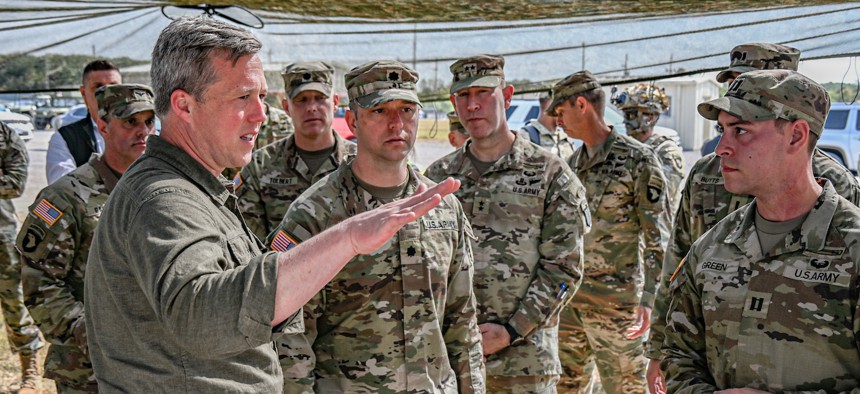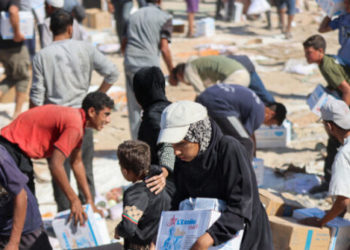
China is the “pacing threat,” Army Secretary Dan Driscoll said Tuesday, but homeland security and southern border operations are just as important as countering that threat.
“I think my understanding of the administration’s priorities and the Secretary of War is China is the pacing threat,” Driscoll said on the sidelines of the annual Association of the U.S. Army’s conference in Washington, D.C. “We must, as a nation, be ready to provide security to Americans no matter where they are located in the world.”
But Driscoll stopped short of calling China the top priority, adding that “we are also, at the same time, in parallel, executing on providing security and maintaining what the president has done at the border.”
Strategic documents have detailed the shift in military focus from China to border enforcement, countering drug trafficking, and backing the Department of Homeland Security. The Army has invested significant manpower behind those missions. U.S. Northern Command has sent around 10,000 troops to the southern border, and the Trump administration has deployed thousands of National Guardsmen to American cities supporting ICE activities.
And, Driscoll said, he expects the southern border mission “to continue into the future for years to come.”
Other military officials have said ahead of the National Defense Strategy rollout that homeland defense is relevant to multiple theaters and missions. Air Force Secretary Troy Meink told reporters at the Air & Space Force Association’s conference last month that “homeland defense pretty much captures all threats.”
U.S. Indo-Pacific Command leader Adm. Samuel Paparo has reiterated the need to support the region amid strategy shifts, and said last month that “the homeland is in the Pacific.”
Driscoll’s comments on China followed a joint announcement between the Army and the Energy Secretary Chris Wright to build a microreactor at a stateside base by 2027. Those officials pointed to long diesel supply chains overseas, including the Pacific, as a threat to U.S. military operations.
“If you think of the Indo-Pacific, and the tyranny of distance between our homeland and that theater, it’s 6,000 miles,” Driscoll said. “If it’s going to be with contested logistics, you’re not going to be able to ship our equipment and our energy sources on slow moving freight liners across the Pacific Ocean. We are going to have to be much more flexible as a nation, and we are focused on that. We are reorienting and continuing to strengthen the Army for that fight.”
It’s unclear what a strategic shift away from the Indo-Pacific would mean for troops stationed in the region. Lt. Gen. Hank Taylor, the commander of the 8th Army, told reporters at AUSA that the new strategic guidance has not reduced funding or training opportunities for soldiers in South Korea.
The post China is ‘pacing threat,’ Army Secretary says—while backing Trump’s homeland defense push appeared first on Defense One.




